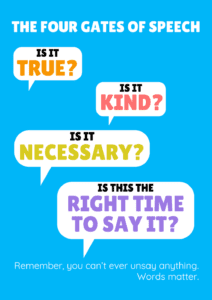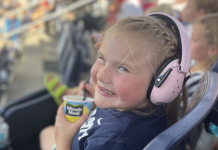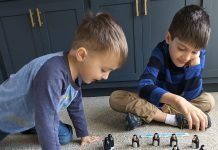I’d like to begin with a caveat – I am not a doctor or a therapist. My son experienced a bout of mild, manageable anxiety and the following resources were very useful as we helped him navigate new feelings. In the case that your family is wrestling with clinically-diagnosed anxiety, please note that while the links included in this post may be helpful to you as well, they should not take the place of a doctor or therapist’s care.

Last month, my son had… a time. Honestly, all three of us had a time. Our ordinarily happy-go-lucky little guy was all of a sudden tearful, wracked with guilt and lacking a verbal filter. In a matter of days, we went from ordinary almost-eight-year-old boy to a hormone-filled hot mess who was:
- experiencing feelings of guilt about inconsequential minutiae.
- completely lacking a verbal filter, in ways that could potentially hurt many feelings.
- worrying about thoughts that he knew weren’t true.
- noticing girls for the first time in his life.
I’ve written before about my own struggles with anxiety. When my son’s behavior ramped up, I was certain he was showing signs of it, too. Thankfully my BFF is a therapist who works with children. As usual, I sought her wise counsel, and she told me that the hallmark of a clinical diagnosis is when something is affecting day-to-day functioning. Despite the new behaviors, my son wasn’t avoiding friends or school or clinging to or isolating from us. His eating and sleep were the same. So, while almost eight years old seems early, we ultimately decided this was all brought about by a surge in hormones. I’m sorry, what? HE’S SEVEN. My BFF told me to give it two weeks. Lo and behold, after about 10 days, the guilt and worry disappeared and the mouth filter returned. Huh.
My sagacious BFF also led me to several resources to help us find our way back to our happy-go-lucky little guy. Some we only needed a time or two, some we are still using even now – over a month later. Maybe they can help you, too!
6 Immediate Actions to Combat Anxiety
1. One of the first things we did was ask our son if he could think of things we might do to help his mind find a happy place again. What was first request? LESS SCREEN TIME. Done. We also only allow YouTube Kids and occasionally monitored YouTube videos if there’s something we’re researching as a family that we can’t find on YouTube Kids.
2. Spend time to create a fun and imaginative narrative with your kiddo that can serve as a mental happy place. One particularly challenging night, we spent over 30 minutes spinning a complicated Star Wars yarn in attempt to help him calm down to sleep. It had even more benefit than I’d intended because the next day, he came home and said, “Mom, my brain got in a loop today and I remembered our Star Wars story and the loop went away.”
3. Make bedtime peaceful and calm. Bedtime was the time when my son’s mind would spin the most. We discovered Elisabeth Blaikie’s guided audio meditations, and they are now part of our nightly routine. There are four selections just for kids (even one for bullying) and dozens more for many other types of meditation. Elisabeth is a treasure and her voice is so soothing.

4. If you find your child in “confessional mode” as we found ours, try asking, “What part about this bothers you the most?” Often, when we asked this question, his guilt or worry was coming from a totally different place than we’d thought.
5. Remind your kiddo that brains are really good at making stuff up. This is how we are able to make up awesome games, build with LEGO, tell great stories, create beautiful art. But it also means that brains can make up things that seem weird or even scary. It’s always okay to say, “Thanks, brain, but I’m letting this weird idea go.”
6. Sometimes a lack of brain-to-mouth filter can spring up, even without the accompanying anxiety. For us, we really worked to focus on the Four Gates of Speech. Here’s a handy printable I created to hang in our son’s room.
Things to Read
1. Tomorrow Is Near But Today Is Here by Asaf Rozanes
This one is great for even the littlest of worriers.
2. I Can Handle It by Laurie Wright
Full of mindful mantras for tiny yogis.
3. Anxiety in Kids: How to Turn It Around and Protect Them For Life by Karen Young on HeySigmund.com
I love how she explains what anxiety feels like, including the biology behind it.
4. Scrupulosity OCD on anxioustoddlers.org
In some cases, confessing thoughts and actions (even the most inconsequential) can be a symptom of scrupulosity obsessive compulsive disorder. This post explains what it looks like and how to help.
5. It’s Perfectly Normal: Changing Bodies, Growing Up, Sex, and Sexual Health by Robie H. Harris
In our case, we felt that, despite the sudden interest in and awareness of girls, our son wasn’t quite ready for this, but we needed to be. I ordered both this book and the one below, Guy Stuff, to help us prepare ourselves for the preamble, “the talk” and beyond.
6. Guy Stuff: The Body Book for Boys by Cara Natterson
From the American Girl Library, this is a companion to the very popular and highly-rated The Care and Keeping of You: The Body Book for Younger Girls by Valorie Schaefer and The Care and Keeping of You 2: The Body Book for Older Girls by Cara Natterson.
7. The Feelings Book: The Care and Keeping of Your Emotions by Dr. Lynda Madison
Another great title from the American Girl Library, this helps girls understand their emotions and deal with them in positive ways.
Extra Credit
My book club read Raising Cain: Protecting the Emotional Lives of Boys by Dan Kindlon, PhD, and Michael Thompson, PhD, years ago. It is so good, as is Reviving Ophelia: Saving the Selves of Adolescent Girls by Mary Pipher, a virtual handbook for navigating the emotional needs of pre-teen/teen girls. My friend, Sara Gilliam, is Mary Pipher’s daughter and, together, they are updating Reviving Ophelia for today’s modern teen girl. The 25th Anniversary edition of Reviving Ophelia will be available in June!
I hope you find these resources as useful as we have. If you have other tips for working with kids to deal with anxiety, please let us know in the comments!

















Great post, Karen. With four kids from 8-15 yrs (and two careers) we currently have two kiddos with varying types of anxiety. We’ve found exercise and taking walks (hello, spring?) one-on-one with the kid who is struggling is a great way to get them talking in a safe space away from the siblings who don’t understand and may comment. I’m going to look into a few of the books you listed. Thanks!